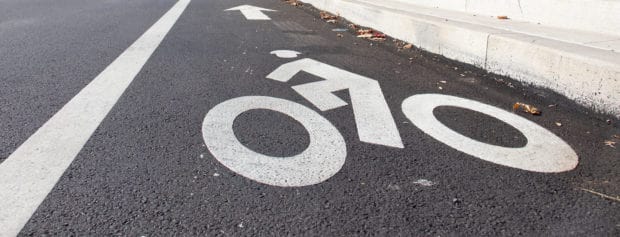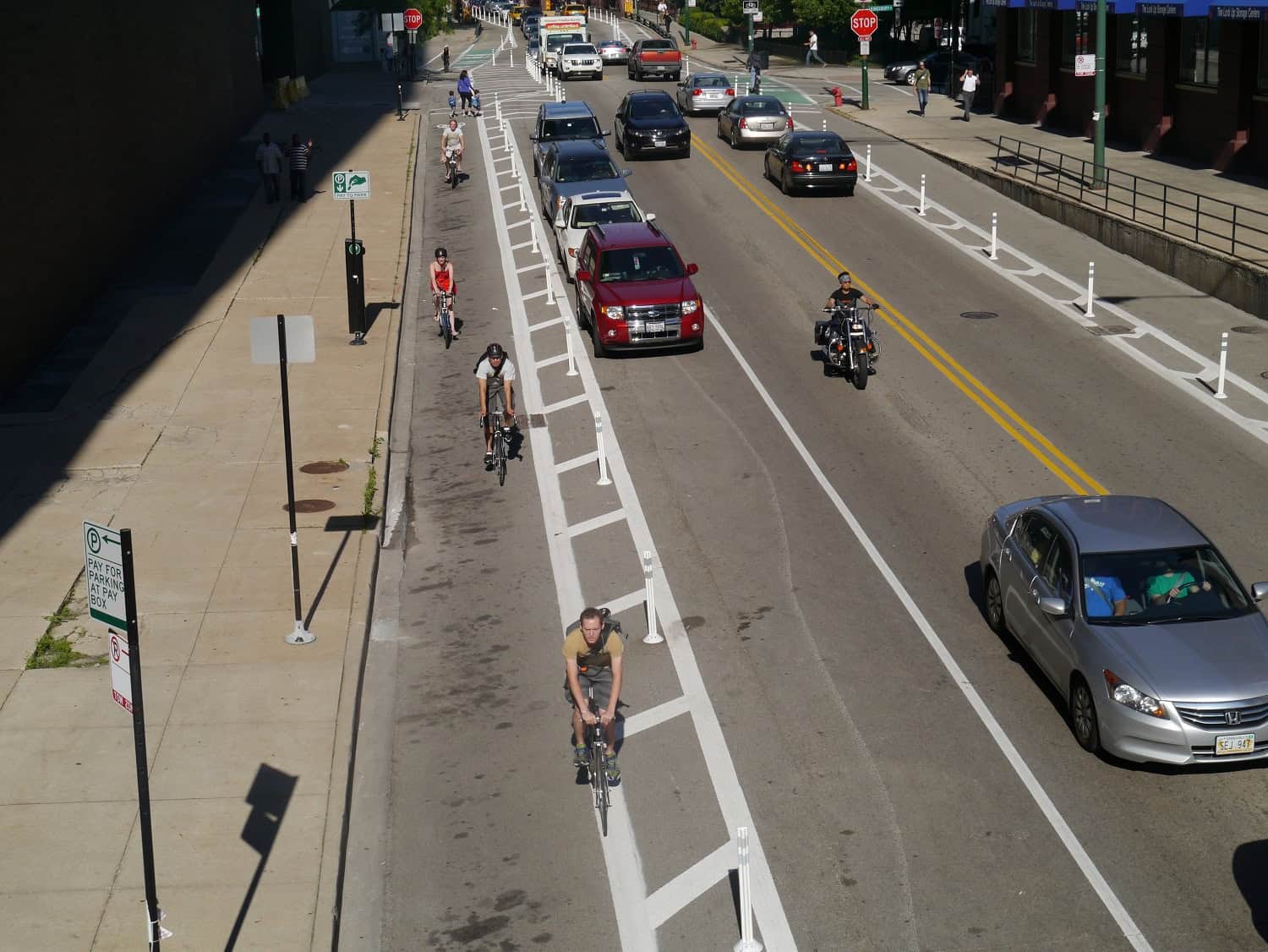
BikePGH’s (and PPAC’s) 2019 Statewide Legislative Priorities
Any laws that govern our streets are forged in Harrisburg. The City of Pittsburgh cannot, for example, decide to pass its own Idaho Stop law, nor create a special license for bicyclists. While BikePGH is not a statewide organization in scope, we do weigh in on statewide issues including policy that dictate how our streets operate locally.
Since 2013, Scott Bricker, our executive director, has served on Pennsylvania’s Pedalcycle and Pedestrian Advisory Committee (PPAC) which has adopted the following 2019-2020 legislative priorities. The list of these initiatives were approved by a majority of voting members of the Committee. This past Fall, PPAC presented the following priorities to PennDOT Secretary, Leslie Richards. In addition to these bicycle and pedestrian-focused priorities, BikePGH also wants to make sure a bill is passed that makes e-standing scooters (like Bird and Lime scooters) street-legal in the state of Pennsylvania.

A parking protected bike lane in Chicago
Parking Protected Bike Lanes
According to a 2018 PennDOT General Counsel opinion, current PA Vehicle Code language prevents the construction of certain types of Parking Protected Bike Lanes. While cities have some flexibility on their own streets, many streets within the city are owned by PennDOT, who will refuse to install this type of infrastructure on their roads. The existing code requires vehicles to park within 12 inches of a curb, so placing the bike lane between parking and the curb is questionable and may not meet the requirements of the law. Given that 2017 saw the highest number of PA bicycle fatalities in five years, this type of infrastructure should be a tool in our roadway engineers’ toolboxes. As a solution to this problem, lawmakers have drafted legislation, currently sitting in committee, that allows parked vehicles to be within 12 inches of the outside line of the bike lane’s buffer area , in addition to the curb. (SB788/HB1657 in 2017-2018 Session)
Radar for Local Law Enforcement
Pennsylvania is the only state in the country that does not allow municipal police to use Radar or LIDAR to catch dangerous speeders. Currently, only the Pennsylvania State Police are allowed to use this technology to enforce the speed limit. Legislation is on the table to allow municipalities (after adopting an ordinance) to use this radar technology to monitor traffic speed. The bill caps the amount of revenue a municipality can retain and sets calibration standards for RADAR guns. It is supported the Coalition to Eliminate the Prohibition Against Municipal Police Using Radar. (SB251 from 2017-2018 Session).
Prioritize Vulnerable Users
A “Vulnerable Highway User Protections” bill is needed to increase the penalties for careless drivers who inflict bodily injury, or worse, death, upon others. Today, a careless driver who kills a pedestrian is fined $500; who causes serious bodily injury – $250. Vulnerable users, according to the bill’s language, are defined as pedestrians, bicyclists, people in wheelchairs, motorcyclists, skateboarders, horseback riders, horse and carriages and farm equipment. A future bill should similarly increase fines for reckless drivers and require four feet of passage for pedestrians, disabled persons and buggies. HB1646 from 2017-2018 would need to be amended to include increased fines for reckless drivers and 4 foot passage for peds/buggies.
Limit Motorists’ use of cell phones
Prohibit those older than 18 to talk on cell phones without hands-free accessories, prohibits those under 18 from using a cell phone at all, and adds three points to the $50 penalty for violating the law. (HB1684 from 2017-2018 Session)
Require motorists to stop for pedestrians instead of just yielding.
Currently, Pennsylvania requires motorists to yield to pedestrians in any portion of the roadway. Other states impose stricter laws:
- Minnesota requires motorists to stop in any portion of the roadway.
- Six states and D.C. require a motorist to stop when a pedestrian is “upon the same half of the roadway or within one lane of the lane that the motorist is traveling upon.”
- Three states require a motorist to stop when a pedestrian is upon the same half of the roadway or approaching closely enough from the opposite side of the roadway to constitute a danger.
- New Jersey requires motorists to stop for a pedestrian within a marked crosswalk, but must only yield the right-of-way to pedestrians crossing within any unmarked crosswalk at an intersection. HB2614 of 2012 session would have required motorists to stop if a pedestrian “is upon, or within one lane of, the half of the roadway upon which the vehicle is traveling or onto which it is turning.”)
Allow bicyclists to yield on stop signs
Allow bicyclists approaching intersections under certain conditions to yield instead of stopping and/or to come to full stop and then move through the intersection. As an example of how one state handled this issue, this is Delaware Code Relating to Yield on Red – Bicycle approaching or entering intersection.
Increase fines for not yielding to pedestrians
Currently, the fine for not yielding to pedestrians is $50 (Section 3542 of Title 75) and should be increased.
A truck side guard (Robin Young/Here & Now)
Mandate side guards on all trucks
Nationwide, half of bicyclists and one quarter of pedestrians killed in traffic crashes are killed by trucks during the first impact with the side of the truck (USDOT Volpe Center.) Following the national side guard mandate in the UK, there was a 61 percent drop in cyclist fatalities and a 20 percent drop in pedestrian fatalities in side-impact collisions with trucks. Boston, Orlando, Seattle, San Francisco, New York City and Washington, D.C. all have various requirements for side guards on city-owned and private trucks.
In Pennsylvania, apparently, Act 90 prevents municipalities from mandating that private haulers install side guards. PennDOT could conduct an evaluation to 1) evaluate scale of this problem statewide, 2) determine if state law prevents municipalities from adopting side guard mandates and if so, 3) propose legislation to permit municipalities to institute mandates.
